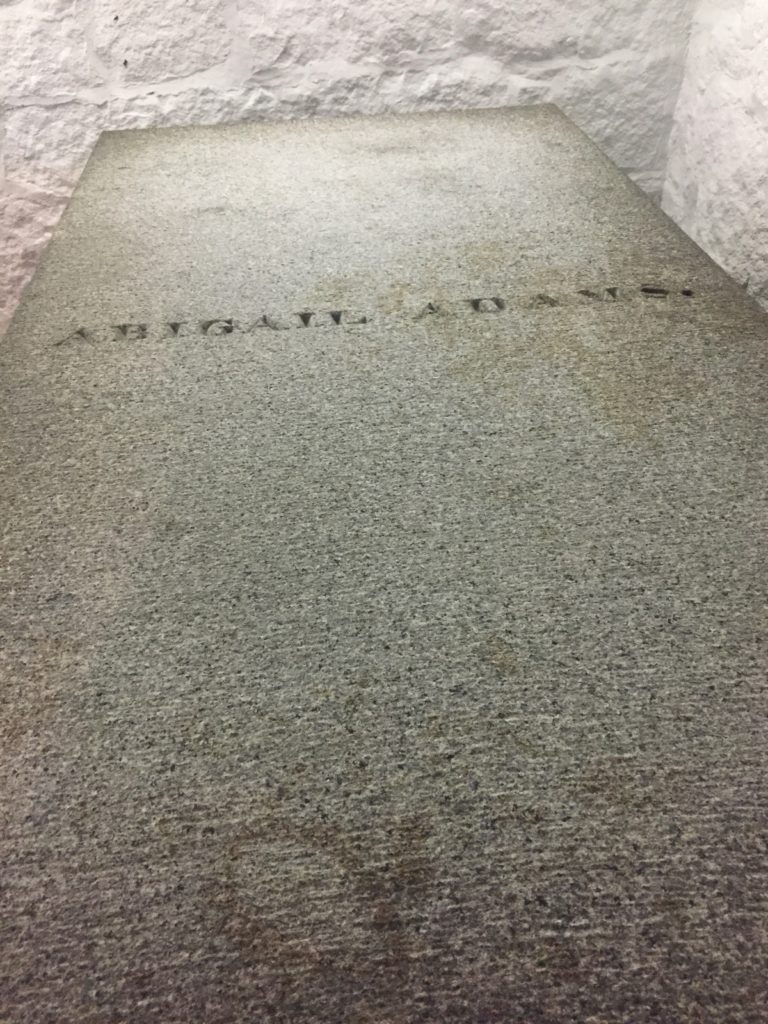Erik Visits an American Grave, Part 589
This is the grave of Abigail Adams.

Born in 1744 in Weymouth, Massachusetts, Abigail Smith grew up as a minster’s daughter with deep roots in the Puritan past. Although she did not have formal schooling, partly because that was still not very common for women and partly because she was often sick as a child, she was a quick learner and became one of the most learned young women in the Americas.
She met John Adams in 1759. Equally intelligent and also very cranky, John was nine years older, but that wasn’t really an issue. Abigail’s father disapproved of their match, as he was from a less wealthy family and was a farmer. They married in 1764 at the Smith’s home in Weymouth. What their marriage truly became known for was the extremely long periods where they were apart. In the early years they were together, as John became a major lawyer in Boston, defending the British in the Boston Massacre trial. Abigail was largely in charge of educating the children and while two of the three boys became hopeless depressed alcoholics, John Quincy certainly lived up to the high standards of the family. Abigail was also in charge of the family money and was well known for being a savvy financial operator of the time, making solid investments that made the family pretty wealthy over time. But once John went overseas shortly after the Declaration of Independence, theirs was a marriage marked by long, lonely absences. Luckily for us in the future, they kept a long and erudite correspondence, with 1,200 letters surviving. That correspondence certainly began in 1776 when John was Philadelphia, as that is when Abigail wrote her “remember the ladies” demand of her husband, which he contemptuously rejected. In general, she was a major proponent of the property rights of married women, though she was also no liberal generally and definitely believed in traditional marriage and domestic roles for women.
Finally, in 1784, Abigail sailed to Paris to be with John. She was much better at dealing with Parisian society than her cranky husband. When he became minister to London, she moved with him there too, but she didn’t care for the class-bound society there. When John became president in 1797, Abigail really started traditions of the first ladies, hosting parties. She was a major political advisor to John, which got the derision of the opposition press. He wrote to her upon his election, “I never wanted your Advice and assistance more in my life.” If anything, she was more outraged by the rise of party politics than he; John did sign the Alien and Sedition Acts with some reluctance, Abigail lobbied him hard to do so. She was really quite conservative in the early republic; fearful of revolution, she wanted strong government measures to clamp down on the masses.
After John lost his reelection campaign, Abigail put her hopes on John Quincy, whose rising political career was a stark contrast to her other sons, and became an adviser of sorts to him as well. She long opposed slavery. In 1791, a young black boy came to her asking to be educated and she saw that through, despite some objections from neighbors. Never very healthy, she died in 1818.
Abigail Adams is buried at United First Parish Church, Quincy, Massachusetts.
If you would like this series to visit other women in American history, you can donate to cover the required expenses here. Nellie Bly is in The Bronx and Jessie Benton Fremont is in Los Angeles. Previous posts in this series are archived here.
